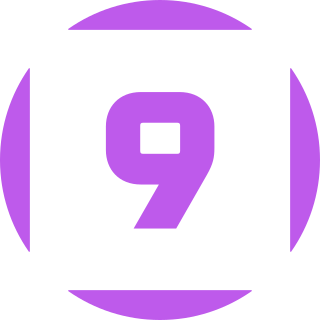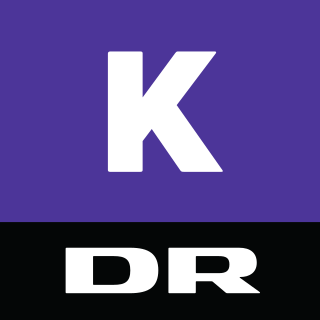Related Research Articles

Digital Video Broadcasting (DVB) is a set of international open standards for digital television. DVB standards are maintained by the DVB Project, an international industry consortium, and are published by a Joint Technical Committee (JTC) of the European Telecommunications Standards Institute (ETSI), European Committee for Electrotechnical Standardization (CENELEC) and European Broadcasting Union (EBU).
DVB-T, short for Digital Video Broadcasting – Terrestrial, is the DVB European-based consortium standard for the broadcast transmission of digital terrestrial television that was first published in 1997 and first broadcast in Singapore in February, 1998. This system transmits compressed digital audio, digital video and other data in an MPEG transport stream, using coded orthogonal frequency-division multiplexing modulation. It is also the format widely used worldwide for Electronic News Gathering for transmission of video and audio from a mobile newsgathering vehicle to a central receive point. It is also used in the US by Amateur television operators.
Digital terrestrial television is a technology for terrestrial television where television stations broadcast television content in a digital format. DTTV is a major technological advance over analog television, and has largely replaced analog television broadcast, which had been in common use since the middle of the 20th century. Test broadcasts began in 1998 with the changeover to DTTV, also known as the Analog Switchoff (ASO) or Digital Switchover (DSO), which began in 2006 and is now complete in many countries. The advantages of digital terrestrial television are similar to those obtained by digitizing platforms such as cable TV, satellite, and telecommunications: more efficient use of radio spectrum bandwidth, provision of more television channels than analog, better quality images, and potentially lower operating costs for broadcasters.
Boxer TV Access is a Swedish brand owned by Tele2 AB providing pay television channels on the digital terrestrial television network in Sweden. Modeled on the British ITV Digital, it was founded in October 1999. Some channels on the Swedish DTT are free-to-air, but most of the channels require subscription from Boxer. Boxer has claimed to have around 500,000 subscribers by June 2016 when it was acquired by ComHem.

DR, officially the Danish Broadcasting Corporation in English, is a Danish public-service radio and television broadcasting company. Founded in 1925 as a public-service organization, it is Denmark's oldest and largest electronic media enterprise. DR is a founding member of the European Broadcasting Union.

DR1 is the flagship television channel of the Danish Broadcasting Corporation (DR). It became Denmark's first television station when it began broadcasting in 1951 – at first only for an hour a day three times a week.
TV 2 Film was a 24-hour two-star movie channel owned by TV 2.

Television in Hungary was introduced in 1957. Transmission in colour was introduced to Hungarian television for the first time in 1971. Hungary had only one television channel until 1973. It was only in the mid 1990s when private and commercial broadcasting was introduced to Hungary.
DVB-T2 is an abbreviation for "Digital Video Broadcasting – Second Generation Terrestrial"; it is the extension of the television standard DVB-T, issued by the consortium DVB, devised for the broadcast transmission of digital terrestrial television. DVB has been standardized by ETSI.
Digital terrestrial television was launched in Sweden in 1999. The shutdown of the analogue equivalent started on September 19, 2005, and was finalized on October 15, 2007.

TV3 Sport is a Danish sports television channel, owned by Viaplay Group and operated by TV3 SPORT. The channel originally broadcast as TV 2 SPORT and was a joint-venture between TV 2 and Modern Times Group.

Norkring AS is a provider of digital terrestrial television and radio transmitting in Norway and Belgium. In Norway, Norkring operates a Digital Video Broadcasting – Terrestrial (DVB-T) network for Norges Televisjon, as well as an FM and Digital Audio Broadcasting (DAB) radio. In Belgium, Norkring operates a DVB-T, DVB-T2, FM, DAB and DAB+ network. It operated a DVB-T network in Slovenia between 2010 and 2012. Norkring is owned by Telenor; Norkring België is owned 75 percent by Norkring and 25 percent by Participatiemaatschappij Vlaanderen.

YouSee is the largest quadruple play service provider in Denmark, and is a part of Nuuday which is a spun-off company from TDC Group, the largest telecommunications company in Denmark which was split into two separate companies. YouSee currently has 994,000 customers, down from its peak of 1.4 million in 2015.
Digital terrestrial television in Estonia, was officially launched on 15 December 2006, when the operator Zuum TV launched its pay service on two multiplexes. Transmissions are made with MPEG-4 AVC compression using the DVB-T standard. A DVB-T2 standard-based network has been created for HD-quality TV picture transmission.
Television in North Macedonia was first introduced in 1964; it remains the most popular news medium. The public broadcaster is the Macedonian Radio Television, founded in 1993. TEKO TV (1989) from Štip is the first private television channel in the country. Other popular private channels are: Sitel, Kanal 5, Telma, Alfa TV, Alsat-M and TV 24.Most private media are tied to political or business interests and state media tend to support the government. Public broadcast networks face stiff competition from commercial stations, which dominate the ratings. A European Union sponsored report says that with scores of TV and radio networks, the market is overcrowded and many local broadcasters are struggling to survive financially.
Boxer TV A/S is a company that is broadcasting pay television channels on the digital terrestrial television network in Denmark since February 1, 2009. It is a subsidiary of Boxer TV Access, a Swedish company which is owned by Com Hem.

Canal 9 is a Danish pay television channel owned by Warner Bros. Discovery EMEA previously owned by C More Entertainment from 2009 to 2015.

DR K was a Danish free-to-air television channel owned by state broadcaster DR. Its programming was centred towards culture and history.

TVP Rozrywka is a Polish free-to-air television channel. It was launched on 15 April 2013 and focuses its programming on entertainment TV series.
References
- ↑ "Video - Analogt sluk i Danmark okt. 2009". recordere.dk. Archived from the original on 2021-12-21. Retrieved 16 January 2013.
- ↑ "THE DANISH DVB-T NETWORK". Digi-tv. Archived from the original on 27 October 2020. Retrieved 16 January 2013.
- ↑ "Sendemaster og frekvenser" (PDF). Norlys.
- ↑ "Sendenettets opbygning". DIGI-TV. Archived from the original on 13 May 2021. Retrieved 16 January 2013.
- ↑ Større tv-udbud og mere konkurrence mellem de forskellige platforme fra 2009, Kulturministeriet, June 11, 2007, archived from the original on August 26, 2007
- ↑ "Forstyrrelser af tv og 800 MHz". Erhvervsstyrelsen. Archived from the original on 7 January 2013. Retrieved 16 January 2013.
- ↑ "Notat om konkrete anvendelsesmuligheder for MUX 8". Kulturministeriet. Retrieved 16 January 2013.[ permanent dead link ]
- ↑ "Boxer udnævnt som gatekeeper". TVnyt.com. 27 March 2008. Retrieved 15 January 2013.
- ↑ "Boxer TV er i luften". Tvnyt.com. 3 February 2009. Retrieved 15 January 2013.
- ↑ Beslutningspapir tiltrådt af partierne bag medieaftale 2007-2010 d. 11 juni 2007 - Retningslinier for utbud af digitalt tv mv. (PDF), Kulturministeriet, June 11, 2007[ permanent dead link ]
- ↑ "Danmark skifter tv-signal den 1. november 2009". DR. Retrieved 15 January 2013.
- ↑ "MUXCPH". Open Channel ApS. Retrieved 16 January 2013.
- ↑ "Boxer får sin fjerde MUX". TVnyt.com. 1 November 2010. Retrieved 15 January 2013.
- ↑ Brinck, Ulrik (10 August 2012). "Boxer slipper for DVB-H". TVnyt.com. Retrieved 15 January 2013.
- ↑ Fredborg, Bo (2 May 2013). "Boxer lancerer flere HDTV kanaler til oktober" . Retrieved 3 May 2013.
- ↑ Fredborg, Bo. "Boxer tilføjer TV 2 Fri HD og Canal8 – test af ny Mux starter i dag". Digitalt.tv. Retrieved 26 September 2013.
- ↑ "BESLUTNING OM ANVENDELSEN AF MUX 8". KULTURMINISTERIET. 1 July 2011. Retrieved 14 March 2017.
- ↑ Ladingkær, Lars (1 July 2011). "MUX8 skal bruges til TV". Recordere.dk. Retrieved 16 January 2013.
- ↑ "MUXCPH-2 Next generation of mobile TV, based on the new standard DVB-T2 | T2 Lite". Open Channel. Retrieved 16 January 2013.
- ↑ Nielsen, Stig (31 October 2012). "France 24 skifter til DVB-T2". TVnyt.com. Retrieved 16 January 2013.
- ↑ Briel, Robert (5 April 2013). "HEVC and HbbTV trial on DTT Copenhagen". Broadband TV News. Retrieved 3 May 2013.
- ↑ "Kravene til modtageudstyr fra 11. januar 2012". Kulturministeriet. Archived from the original on 17 February 2013. Retrieved 15 January 2013.
- ↑ Larsen, Rasmus (3 February 2011). "TV2 REGIONS-KANALERNE OMDANNES TIL HD". Flatpanels.dk. Retrieved 16 January 2013.
- ↑ "Boxer lancerer HDTV - skifter delvist til DVB-T2". Flatpanels. 14 September 2011. Retrieved 15 January 2013.
- ↑ Kjærsgaard, Bo (28 February 2017). "DR2 nu i HD på tv-antennen DVB-T". Digitalt.tv. Retrieved 1 June 2017.
- ↑ Kjærsgaard, Bo (13 December 2016). "DR K nu i HD opløsning på DVB-T nettet". Digitalt.tv. Retrieved 1 June 2017.
- ↑ Kjærsgaard, Bo (26 May 2017). "To modeller i spil i ny DVB-T Gatekeeper tilladelse". Digitalt.tv. Retrieved 1 June 2017.
- ↑ Madsen, Thomas. "Regeringen vil finde ny tv-gatekeeper inden for et år". Mediawatch. Retrieved 1 June 2017.
- ↑ "UDBUD AF JORDBASEREDE DIGITALE TV-SENDEMULIGHEDER (DTT)". Slots- og kulturstyrelsen. Archived from the original on 15 January 2018. Retrieved 14 January 2018.
- ↑ Kjærsgaard, Bo (21 December 2017). "Nu kan der bydes på DTT Gatekeeper tilladelse". Digitalt.tv. Retrieved 14 January 2018.
- ↑ Madsen, Thomas (13 March 2018). "Boxer står alene som ansøger til ny tv-licens". MediaWatch. Retrieved 13 March 2018.
- ↑ Kjærsgaard, Bo (6 June 2018). "Boxer TV fortsætter som distributør på det terrestriske sendenet". DIGITALT.TV (in Danish). Retrieved 10 March 2019.
- ↑ "DR klar med overblik over program- og kanallukninger". TV2. TV2. Retrieved 6 January 2020.
- ↑ "Her er datoen og klokkeslæt for lukning af DR3, DRK og DR Ultra". Digitalt.TV. Retrieved 6 January 2020.
- ↑ "LUKNING AF ANTENNE-TV-SIGNALER UDSKYDES". Ministry of Culture. Retrieved 24 March 2020.
- ↑ "Flere tv-kanaler får ny plads i kanallisten fra 2. juni når tv-signalerne omlægges til DVB-T2". Digitalt.tv. Retrieved 29 May 2020.
- ↑ "DR Ramasjang, TLC og TV 2 Sport X klar i HD fra 2. juni på DVB-T2". Digitalt.tv. Retrieved 29 May 2020.
- ↑ "Farvel til Boxer – Skal nu hedde Norlys". digitalt.tv. Retrieved 29 March 2023.
- ↑ "Kanalplaceringer" (PDF). Norlys. Retrieved 28 March 2023.
- ↑ "Kanalspecifikationer" (PDF). DIGI-TV. Retrieved 24 March 2020.